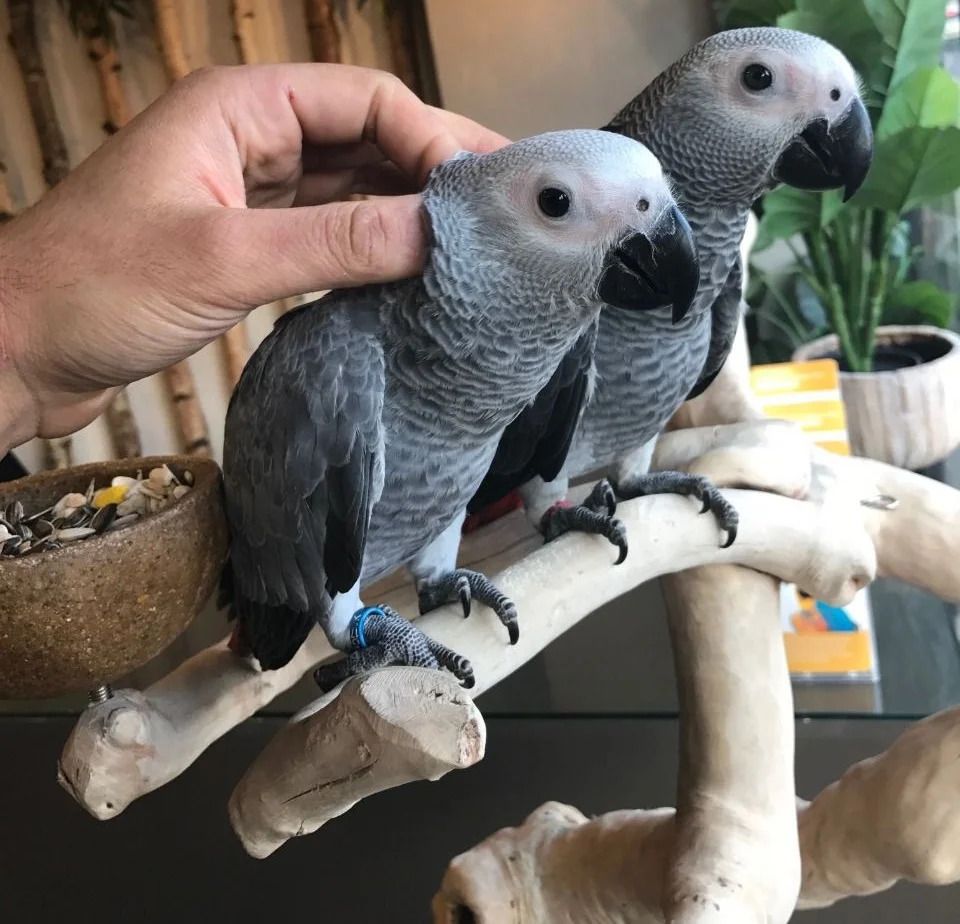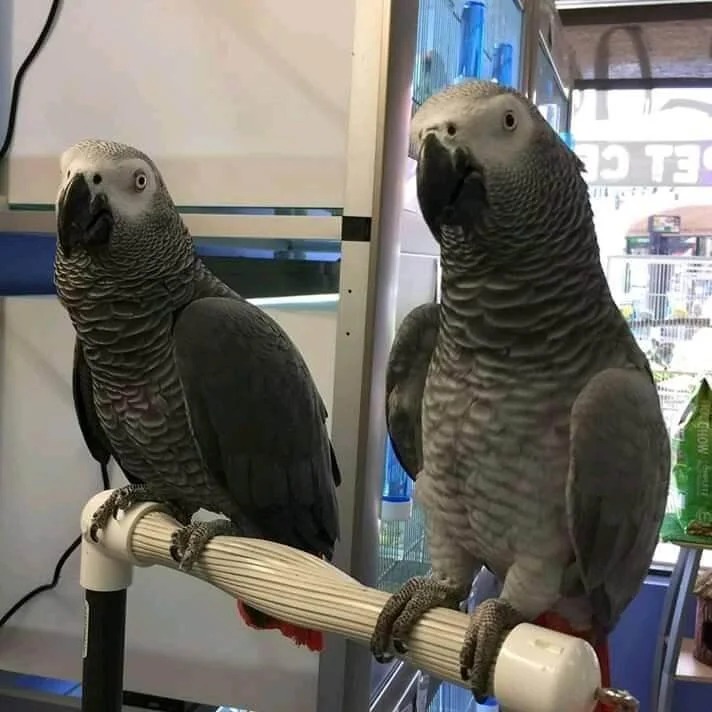The 10 Most Terrifying Things About Caring For An Grey Parrot
페이지 정보
작성자 Clifton 연락처 작성일 25-04-25 02:02 조회 41회 댓글 0건본문
 caring for an Grey parrot For an african grey parrot adoption Grey Parrot
caring for an Grey parrot For an african grey parrot adoption Grey ParrotAfrican grey parrots, much like toddlers, can become bored easily and require mental stimulation to prevent behavioral issues. They may become destructive or scream if they don't get enough stimulation.
They are extremely intelligent and can mimic human speech. They face threats from the pet trade and habitat loss.
Feeding
The dietary requirements of baby african grey parrot greys differ from those of other large psittacines. Although they are omnivores in the wild, they are more attracted to seeds over fruits and vegetables.
In captivity they are more likely to eat fruit and leafy vegetables than seeds. It is also important to observe the quality and quantity of their diets since they are at risk of excess weight and calcium deficiency. Pellets or complete crumbles should constitute 75% of a parrot's diet and it is recommended that they be purchased from reputable brands such as Harrisons, Murphy's or Vetafarm.
Ideally the diet should comprise a mixture of pellets and fresh foods. A good ratio is 60% pellets, 10 percent seeds and 30 percent fresh food. Kale, spinach and silverbeet are some of the best choices. Sprouting grasses and native plants like dandelion greens, endive and okra are also beneficial. However, you should avoid cruciferous vegetables such as cabbage and cauliflower because they are high in oxalic acid, which can hinder the absorption of calcium in the body.
Nuts are an excellent source of nutrients to a diet, but they should be consumed sparingly due to their fat content. They are high in protein, healthy fats, as well as vitamins and minerals.
The rest of your diet should comprise the combination of fruits and veggies. It is best to stay clear of avocado since it can be toxic to the psittacines. Other foods that are toxic include alcohol, coffee, chocolate and raw potatoes. In the same way, if a parrot eats too many berries they could be suffering from yeast issues in their gastrointestinal tract.
A balanced diet is the best method to keep your African grey parrot happy and healthy. It is essential to keep an eye on the bird's weight and to introduce new foods in small amounts. It is recommended to weigh the bird every day to ensure that any changes can be observed and quickly rectified. It's also a great idea to offer the bird fresh water regularly. This will prevent dehydration and bacterial infections. It is also important to take away any food items that are not consumed from the cage or play area since it can spoil and cause health issues for your pet.
Training
Parrots are highly intelligent and are able to speak, although they may take days or even weeks to repeat words they hear. A parrot that is trained well can also do simple tricks and respond to cues. These activities keep a bird's brain active and stop them from becoming bored. Boredom can lead to unwelcome behavior like feather picking and destructive chewing. These problems require professional intervention.
It is crucial to stop bonding in the bud, because if a parrot becomes completely attached to one person in a family it could become territorial and threatening to other members of the family. This could be dangerous for children as well as the elderly or people with allergies. To prevent this from happening, all in a household should spend time every day playing with the parrot and engaging with it in various ways. This will make the bird more comfortable being handled by members of the family and reduce the possibility that it could develop an overprotective behavior.
When a bird is bonded to a single person, it may bite and scratch at family members or guests who attempt to pet or handle it. To prevent this from happening family members should take turns rubbing the bird or placing it in its cage. If a parrot displays aggressive behavior and is threatening to harm another bird, it should be placed back in its cage and not handled for a period of time.
During pet-loving sessions be aware of the areas that are thought to be "blood feathers" or "pinfeathers." These feathers have a blood supply, and could be bleed if touched. If a pinfeather or blood feather is found to be exposed, it must be promptly clipped and replaced with a new feather.
Family members should also be taught how to greet and say goodbye to the bird. The bird should be taught how to identify food items or toys. This will make it easier to train the bird to speak and will also allow it to communicate with family members, without having to be physically near them.
Health
The African grey parrot is one of the most intelligent animals in the world. However, it is prone to get bored and resort to destructive behavior if it is not provided with enough toys or methods to exercise their mind. It also needs a great deal of mental stimulation to avoid self-mutilation, excessive screaming and feather picking. Parrots aren't cheap to acquire as the initial costs are high and they require a constant supply of toys that are destroyed quickly, plus food. They are also prone to infections and are costly to treat.
These social birds require plenty of interaction with their human counterparts, which includes hours of playtime that includes games or puzzles, as well as lessons. To stay strong and healthy they must exercise for hours a day and out of their cage. Their cage should be large enough to allow them to spread their wings and move freely from perch to perch. It should be made of non-toxic, non-toxic substances and clean. It should be equipped with a variety of perches, with different heights and textures so that birds can change between them. They also need the roost, which is usually a wooden post that is tall or an elevated concrete perch in the corner of the cage.
Parrots should have access to water that is fresh at all times and it is recommended to replenish it regularly. They should be provided with various dark leafy greens, vegetables and fruits and treats should be limited to a maximum of 10% of the diet. They should be provided with various nuts and seeds as well. Around 75% of their food should be made up of high-quality crumbles or pellets.
The majority of the problems with parrots are the result of long-term dietary imbalance. Small irregularities can be manifested as poor growth, poor plumage quality or poor breeding performance. More significant changes may appear as distinct diseases. Many of these can be avoided by regular check-ups from an avian vet, and the proper management of diet.
Care
As with all birds, African greys require lots of focus and stimulation to be content. If a parrot is bored, it can display negative behaviors like aggression, self-mutilation, or feather grabbing. It is important to have routine veterinary exams as well as fecal screening and vaccinations performed to ensure that your pet stays healthy.
African greys are monogamous and form a dedicated pair bond which incubate eggs for up to 30 days. They care for the babies until they are about 10 weeks of age. They fly and are among the most intelligent species of birds. They have long lifespans and often outlive their human owners, making them popular pets worldwide.
They are highly adaptive and are able to adapt to different environments. However they prefer a natural environment with lots of trees and perches. They can also utilize their feet - two facing back and two facing forward on each foot - to help perch and balance, just as humans use their hands. Their short beaks have a curved upper mandible that fits neatly over the lower to help them crack open seeds and nuts and their strong grip could cut through bark and wood.
In the wild, african grey parrot baby for sale greys will eat fruits, nuts seeds, dark leafy greens as part of their balanced diet. Seeds should not constitute more than 5% and be supplemented with high-quality crumbles or pellets to avoid pickiness. Additionally they should be served with an assortment of fresh vegetables, fruits, and cooked beans and lentils. Fresh water should be available, and cage cleaning is required daily. If the diet is not complete, supplements such as calcium or vitamin D could be required.
 The World Parrot Trust is working to protect Grey and Timneh Parrots as well as their habitats. However, their populations are declining due to illegal trade. Luckily, they are protected under the Endangered Species Act and the Wild Bird Conservation Act in the United States and receive the highest protection under CITES (International Trade in Species Controlled). Find out more about these incredible birds in our parrot encyclopedia!
The World Parrot Trust is working to protect Grey and Timneh Parrots as well as their habitats. However, their populations are declining due to illegal trade. Luckily, they are protected under the Endangered Species Act and the Wild Bird Conservation Act in the United States and receive the highest protection under CITES (International Trade in Species Controlled). Find out more about these incredible birds in our parrot encyclopedia!- 이전글Why Is Buy Driver's Permit So Popular?
- 다음글The Reasons Buying A Driving License Experiences Is Fast Becoming The Hottest Fashion Of 2024
댓글목록
등록된 댓글이 없습니다.
